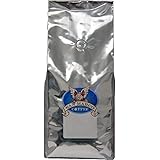Mastering Barista Coffee Making: Consistency for Busy Cafes
Do you ever wonder what truly sets a great barista apart? After watching Stefan Kolberg’s insightful video on barista coffee making for beginners, it becomes clear: consistency is king. Stefan, with his 15 years in the coffee business, emphasizes a no-nonsense approach. He guides busy baristas toward making consistently excellent coffee. This guide expands on his crucial advice. It offers practical steps for achieving unparalleled espresso and milk quality.
The Foundation of Flavor: Consistent Espresso Making
Stefan highlights espresso as coffee’s most vital component. Its quality directly impacts the final drink. A perfect espresso shot provides a rich, balanced base. An inconsistent shot, however, can ruin any beverage. This makes consistent espresso making a top priority. Every busy barista must master this art.
Indeed, studies indicate that extraction variability affects customer satisfaction. A specialty coffee association report suggests consumers detect even subtle differences. They prefer predictable flavor profiles. This confirms Stefan’s emphasis on daily consistency. It ensures every customer enjoys a reliably delicious cup.
Precision Grinding: Dialing In for Daily Success
Grind size is crucial for proper extraction. Stefan stresses daily grinder adjustments. This process is known as “dialing in.” It ensures the ground coffee consistency matches daily conditions. Temperature and humidity constantly change. These environmental factors significantly alter grind behavior.
For example, high humidity makes coffee particles stickier. This can slow down extraction. A coarser grind might then be necessary. Conversely, dry air causes faster flow. This may require a finer grind setting. Industry best practices recommend starting fresh each morning. Baristas should pull test shots. They adjust the grind until optimal flow is achieved. This proactive approach prevents flavor defects. It ensures consistent espresso quality throughout service.
Dosing and Tamping for Optimal Extraction
Correct dosing follows precise grinding. This involves weighing your coffee grounds accurately. Over-dosing or under-dosing can lead to uneven extraction. Most cafes aim for a specific dose, like 18-20 grams. However, this varies by basket size. Consistency in dosing ensures uniform coffee beds.
Tamping is the next critical step. Stefan mentions applying the right pressure. The goal is an even, compact coffee bed. This prevents “channeling.” Channeling occurs when water finds paths of least resistance. It flows too quickly through parts of the coffee. This leads to under-extracted areas. It also causes over-extracted areas. Proper tamping ensures uniform water flow. It produces a balanced and flavorful espresso shot. The tamp must be level, using firm, even pressure. This is a key part of perfect barista coffee making.
Once espresso starts flowing, observe its rate. Stefan advises a 25 to 30-second extraction time. This timeframe is a general guideline. It produces a balanced shot for most coffee blends. A shot that runs too fast tastes sour. A shot that runs too slow tastes bitter. Adjusting grind and tamp helps achieve this ideal range.
The Art of Steaming: Perfecting Milk Texture
Milk steaming transforms liquid milk into velvety microfoam. Stefan offers practical advice for this process. The steam wand should enter the milk about a third of the way in. It should be positioned slightly off-center. This creates a whirlpool effect. This action integrates air evenly into the milk. It also breaks down large bubbles.
Achieving the correct temperature is essential. Stefan specifies 60 to 65 degrees Celsius. This range optimizes milk’s natural sweetness. Overheating milk burns its sugars. It creates an unpleasant, thin texture. Underheating leaves it cold and undesirable. Use a thermometer or rely on touch. Stop steaming once the desired temperature is reached. Then, purge and wipe the steam wand immediately. This prevents milk residue buildup.
Learning to “stretch” the milk is key. Stretching adds air for desired volume. Different milks behave uniquely. Whole milk creates rich, dense foam. Skim milk produces lighter, airier foam. Plant-based milks often require specific techniques. Baristas must understand these nuances. They ensure consistent milk texture for every drink. Practice is vital for mastering this skill. This elevates your overall barista coffee making ability.
Taste Reigns Supreme: Beyond Latte Art
Stefan makes a strong point: taste trumps aesthetics. He notes 90% of his served coffees are takeaway. These drinks usually get a lid. Latte art is beautiful, yet often unseen. Focus on flavor and consistency instead. Customers return for delicious coffee, not just pretty patterns.
Modern trends also support this view. Environmentally friendly cups are popular. These also come with lids. The emphasis remains on quality inside the cup. Prioritize the core elements: well-extracted espresso and perfectly steamed milk. This commitment ensures customer satisfaction. It builds a loyal customer base. A consistently great-tasting coffee ensures business success. This perspective guides truly effective barista coffee making.
Practicing for Professional Barista Mastery
Mastering any skill requires dedication. Barista coffee making is no exception. Stefan emphasizes the need for extensive practice. Repetition builds muscle memory and refines technique. This allows baristas to maintain quality. They can then perform under pressure. Imagine making three coffees per minute. Consistency remains paramount even during peak rush. Each shot must be as good as the last.
Seek feedback on your practice. Work with experienced baristas. They can offer valuable insights. Identify areas for improvement. Analyze your espresso shots and milk texture. Continual learning drives improvement. This journey builds confidence and expertise. Embrace the learning process. It ensures your barista coffee making skills are always evolving.







